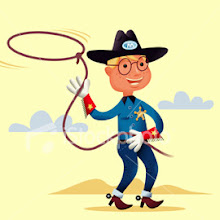Whatever you do, don’t skateboard near the kettle
I am now the eldest member of my Japanese class at Yamasa (a status I have held for a week since the premature departure of the previous incumbent) and there are days when, compared to the young whippersnappers that make up the rest of the class, I feel slow. Mine is a natural handicap that awaits them too: research suggests that mental powers (reasoning, spatial visualisation and speed of thought) start to dwindle at 27 ( http://news.bbc.co.uk/2/hi/7945569.stm ). At least, from a linguistic perspective, research suggests that we are all (at least, I think we’re all) in the same boat: that's to say we have passed the ‘Critical Period’, the first few years of life that constitute the time during which language develops readily, until (sometime between the age of 5 and puberty) language acquisition becomes much more difficult and ultimately less successful ( http://en.wikipedia.org/wiki/Critical_period ). I remember learning about this when I was a young whippersnapper myself, well before the rot set in.
So that’s established: I have an ageing brain. And nowhere am I more acutely aware of this than in kanji classes.
Having only studied European languages previously, kanji so far seem to inhabit a kind of parallel dimension which runs alongside spoken Japanese and hiragana / katakana (the written forms of Japanese which indicate pronunciation). If a student of Japanese were to get sidetracked by excessive kanji study early on, it might be expected that his communicative growth would be stunted. Yet sooner or later, if he has genuine long-term ambitions of “mastering” Japanese (this seems like a rather remote prospect or fantastic notion for me as things stand today, despite my best endeavours), his focus has to shift a little. Every word for which he knows the pronunciation and meaning – that’s a fairly limited range of language for me today - will need to replicate itself in his memory in the form of kanji too.
So far, our teachers have introduced around 125 of the most common kanji, and I cannot yet write all of these fluently and accurately, from memory. The long-term target is around 2000. Yikes. Kiss daylight goodbye.

During the last few years working in an English school, there was regular, worthwhile discussion of the pedagogy behind ensuring that the needs of students with differing preferred learning styles (visual, auditory, kinaesthetic) were addressed in class. Now that I’m the student, I’m really not sure what my own preferred learning style is, and at no time is this more evident than when I’m learning kanji. My youthful classmates ‘get’ images, seem to make the connections quickly. I only seem to make progress at home. I only have 2 50-minute kanji lessons a week but these generate about 50% of my homework.
Don’t get me wrong. Study of kanji isn’t a chore. As I have hinted at in previous posts, many kanji are quite revealing, even inspiring. For example, only this week have I grasped that the Japanese word (and kanji) for fireworks means “flower fire”, and that ‘husband’ and ‘owner’ incorporate the same kanji. And “to learn” means you have “white wings” (which presumably pack up in your late 20s).
But, so far, the only way for me to learn these enjoyably – therefore successfully – has been to invent my own ‘bridge’ language. Just as the pronunciation and meaning of certain Japanese words lend themselves readily to mnemonics (for example, ‘shita’ means ‘beneath’ – think about it); some kanji can be associated imaginatively – and hopefully unforgettably – with either its meaning or pronunciation. I learnt hiragana and katakana using the excellent image / mnemonic – based flashcards produced by the White Rabbit press yet haven’t found anything quite the same for kanji. So perhaps it was for the best that I created my own.
Here are some I made earlier (with the meaning of the kanji of which it forms part, in capitals) …
物stab that crouching THING
好I LOVE jousting my FAVOURITE child (on the right-hand side, that’s the kanji for ‘child’)
前Before – Freddie Krueger BEFORE plastic surgery
電Electricity – caught in the ELECTRICITY power socket
新New – facing the NEW kettle
聞Hear – I can HEAR the owl between 2 stools
五5 - FIVE long-haired skiers
晩Night - Freak walking to the window in glasses at NIGHT
書Write - I WRITE all day and fall asleep at my desk
安Cheap / Safe - that’s CHEAP (but SAFE) – pretending to walk on a tightrope
赤Red - jump across the parted RED sea
近Near - don’t skateboard NEAR the kettle
食Eat - EAT a baguette under one roof
As you can see, I now inhabit a world of eagles resting against trees, weightlifters, surfers and cheating tightrope walkers, kettles, skiers, skateboarders, break dancers, knife-carriers, jousting mothers, beasts and .. ahem … breasts (母 ) . These bring a new meaning to ‘radical’ (which I understand to be a component that makes up a kanji). Maybe, like fairies at the bottom of my garden, you don't see them.
Do these flash cards actually work? Well, the jury's still but my test results have been ok. At first, when trying to recall the meaning of new kanji, I often have to go all around the houses. I see the association in the flash card before I see the meaning. Sometimes I don’t even see the meaning at all. But, over time, the bridge falls away. And then I don’t see kettles, skiers etc... just Japanese.
Will I be able to sustain the creation of this parallel universe for 2000 kanji? Or will senile dementia get the better of me first? Let me know, please.



No comments:
Post a Comment